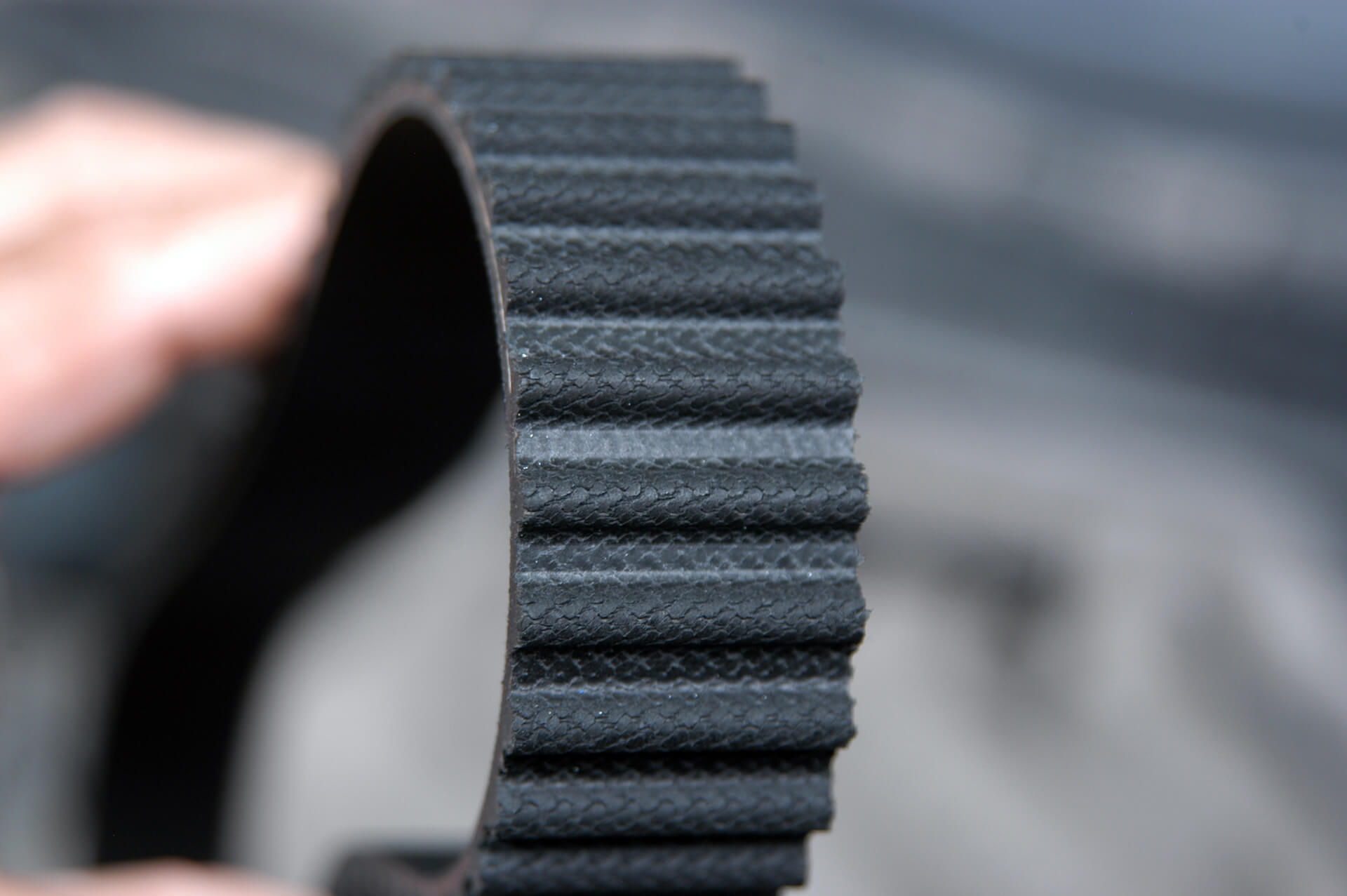

One of the best-known examples of drive belts is the V-belt. A similar variant with the same purpose is the timing belt.
In the car, the belt is used to connect and to drive side-assemblies such as the water pump, coolant fan and alternator to the crankshaft. V-belts can also be found in washing machines or bench drills.
As the name suggests, the belt is wedge or V-shaped and endless. It consists of rubber and a fabric insert that absorbs the tensile forces.
The belt is clamped in V-shaped grooved pulleys. This subjects the edges of the belt to high friction and leads to wear. One indication of worn V-belts is a sudden squeaking noise from the car.
The minimum wear and high torques of today's engines place high demands on the V-belt. Using STW fibres in the rubber compound solves these problems. Our specially coated fibre fillers ensure an excellent bond between the fibre and the rubber. This significantly reduces wear and the V-belt can absorb higher torques. Our fibres also improve the damping behaviour and thus reduce the running noise of the V-belts or timing belts.
Fibre recommendation